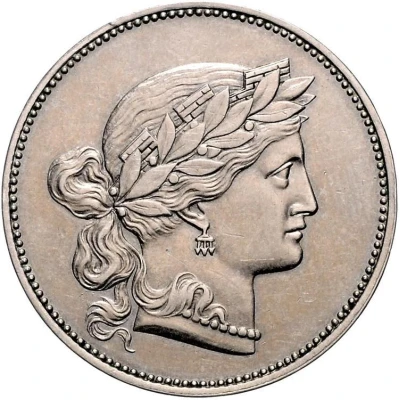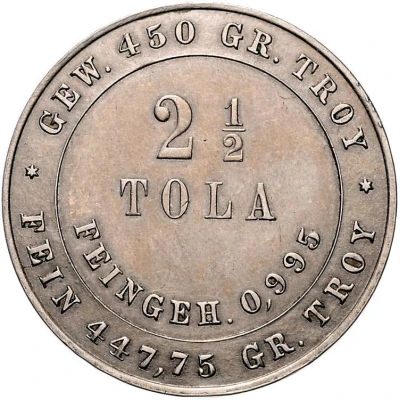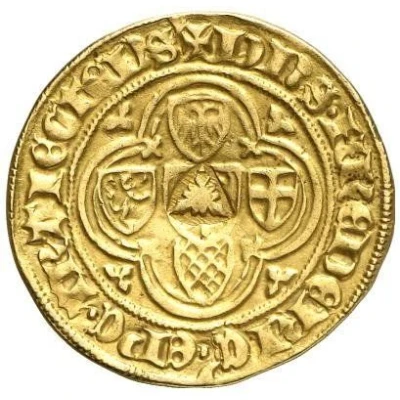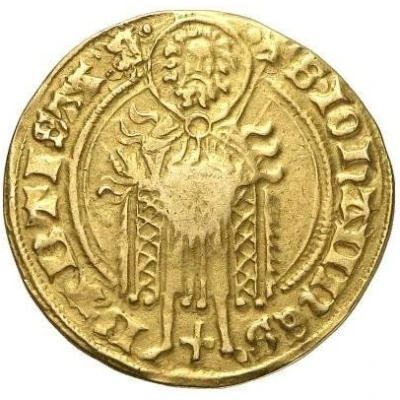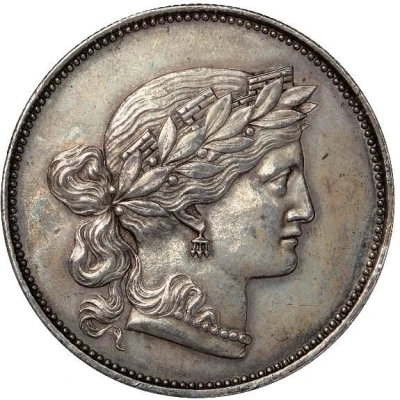
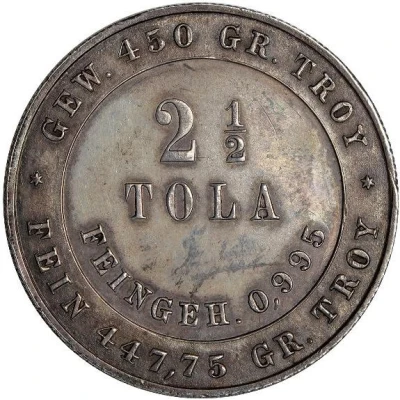

© Baldwins of St James Ltd
2½ Tola Trade coinage ND
1877 year| Silver (.995) | 29.12 g | 36 mm |
| Issuer | Free Hanseatic city of Hamburg (German States) |
|---|---|
| Issuing entity | Friedrich Wilhelm Burchard |
| Period | Free Hanseatic City (1324-1922) |
| Type | Non-circulating coin |
| Year | 1877 |
| Value | 2½ Tola (5⁄2) |
| Composition | Silver (.995) |
| Weight | 29.12 g |
| Diameter | 36 mm |
| Shape | Round |
| Technique | Milled |
| Demonetized | Yes |
| Updated | 2024-10-05 |
| Numista | N#371791 |
|---|---|
| Rarity index | 100% |
Reverse
Script: Latin
Lettering:
GEW . 450 GR . TROY
2½
TOLA
FEINGEH . 0.995
✶ FEIN 447,75 GR . TROY ✶
Unabridged legend: Gewicht 450 Grains Troy. Feingehalt 0.995. Fein 447.75 Grains Troy.
Translation: Weight 450 Troy grains. Feinness 0.995. 447.75 fine Troy grains.
Edge
Milled
Comment
Historical contextUp to the 19th century, currency in the German states was purely based on silver, with a few exceptions (Bremen, Hannover, Prussia). However, in the 19th century, gold became very popular around the world, particularly in the United States, France, and the United Kingdom, after new large gold mines were established in California and Australia. With the Imperial Coinage Act of 9 July 1873, the German Empire also moved to a pure gold currency, following the international trend. Silver had thus lost its function as a currency metal and was only used for minting divisional coins in limited quantities and with limited paying power.
Initially, the thalers minted according to the Vienna Mint Treaty of 1857 with a value of three marks remained in circulation. However, the thalers were also eventually suspended. This progressive demonetisation of old silver coins had considerable consequences for the silver market, resulting in the price of silver falling sharply. In 1873–1874, a pound of fine silver was traded at the Hamburg Stock Exchange for 85–86 marks. By 1876, the price had dropped to 72 marks.
Nevertheless, even after the 1870s, silver remained very popular in some parts of the world, such as Africa and Asia, and especially in China and British India. Notably, Mexico continued to export there its and Austria exported in large quantities the , which was highly sought after in the Middle East and Africa. Germany also considered taking advantage of these important eastern markets to get rid of the devalued silver.
German trade coinage
In September 1876, Adolf Soetbeer (1814–1892), renowned professor and monetary politician in Göttingen, sent a memorandum to the Imperial Chancellery, the President of the Reichsbank, the Hamburg Senate, and the Hamburg Mint Director (Hermann Kienitz). The memorandum proposed the minting of silver trade piasters for the Orient, with a fineness of at least 995‰, a fine weight of at least 24.5 g, and a maximum deviation from the standard of 1‰, guaranteed by the German Reich. Nevertheless, the memorandum was declined by the imperial authorities, on the basis that the trade with the Orient was too low to warrant a dedicated coinage, and having already witnessed a similar project that was unsuccessful: the Hong Kong trade dollar that failed in 1868, only two years after its introduction. More importantly, there was a concern that these trade coins would violate the Imperial Coinage Act of 1873, which strictly limited the minting of silver coinage.
Minting
While the Empire could not issue these coins, the city of Hamburg could issue them instead. A possibility to realise this project came at the beginning of January 1877 when the Calcutta and London-based company Ernsthausen & Oesterley expressed their interest and that of some partner banks in trading dollars for India with a fineness of 994‰ at the Hamburg mint, under the patronage of the Free Hanseatic City of Hamburg. Later the same year, the trading house Friedrich Wilhelm Burchard became interested in minting 3000 piasters for China and India. Burchhard made several patterns at the Hamburg Mint. The patterns featured the head of Hammonia, the female personification of Hamburg, the caduceus of Mercury, the coat of arms of Hamburg and the mintmark J of the Hamburg mint. Later in 1877, 5459 trade coins were commissioned by Burchard, featuring an anepigraphic obverse with the head of Hammonia and an inscription on the reverse with the weight and fineness. This minting was hardly known to anyone outside the circle of those involved and the majority of the pieces was melted down in the East Asian countries of destination.
Source:
Konrad Schneider. 1981. "Die Prägung von Handelspiastern in Hamburg und der Silberüberschuß nach Einführung der Reichswährung 1873". In VSWG: Vierteljahrschrift für Sozial- und Wirtschaftsgeschichte, 68(3). Pages 372-383
Interesting fact
One interesting fact about this coin is that it was minted during a time when the Free Hanseatic City of Hamburg was an independent state, and it features an image of the Hamburg coat of arms on one side and the Hanseatic Cross on the other.
